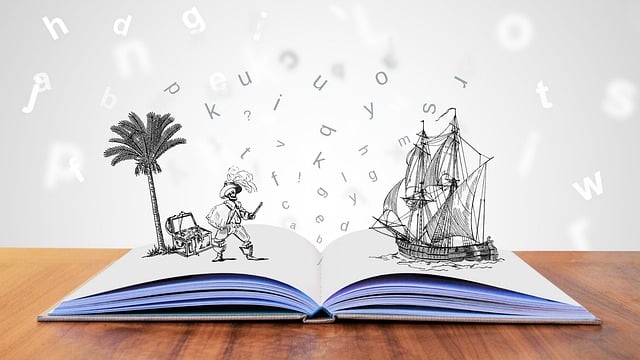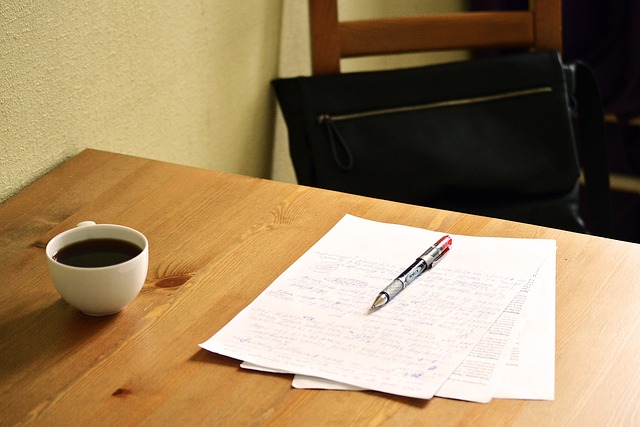The economy of self-publishing fully depend on whom you are hiring and how much you can spend. It depend on your need and whether you are hiring the right persons on the job. In order to self-publish you need to have a team helping you with the cover design, editing, formatting, marketing strategy, and project management. Having a solid team of experts will ensure that you have a successful book launch and book sales. There are also marketing costs like creating and designing a website, promoting your book on social media, and purchasing promotional materials. The most important advantage in self-publishing is that you make 100% of the profit for each book that you sell directly. The price can be adjusted based on the printing cost and how many books you are selling directly to someone or a company.
A survey done in US 10 years back revealed the average self-published author earns $10,000 a year. And even that paltry sum is escalated by the successful writers in self-publishing economy, 10% of the authors in the study made 75% of the money. 75% of authors made under $500.
How much does cost to publish book
There was a study done in Australia in regard to economics of self-publishing book few years back. As a case-study, the cost was calculated on a 200 page non-fiction book with 30,000 word-count. An average rate of 500 words per hour is something which is manageable for writing a non-fiction, and that which would equate to 60 hours. Adding the planning and research time involved for writing, the time was doubled to 120 hours. And thereafter a calculation was made on how much a person can earn by spending 120 hours of real time. Copyediting of a 30,000 word manuscript will cost in the range $150 to $1000. Typesetting of our text-heavy book will cost in the range $250 to $1500. Cover design cost shall range between $400 and $1500. ISBN for the paper book and another one for the e-book version shall be needed for publishing. The cost in Australia is $44 for one. Considering a minimum order of at least 200 copies, and preferably 500 or 1000, and for the purpose of keeping the unit price as reasonable as possible, the cost shall be something less than $7. Adding the handling fee and shipping charges, the cost of one copy shall be around $12.50.
Book publishing budget
You should design your book covers so they are clear and readable across numerous devices, whether the book is displayed as a thumbnail, full size, low- or high-resolution, colour or grayscale. The formatting depends on the services used but most services offer tools to help convert books into the correct format.
If you are not confident about doing this process alone, self-publishing service companies are there to help you with the hard work with a cost. They shall offer various services including proofreading, editing and illustrations and also help on the marketing and retail side. They’ll automatically advertise the book on their own websites as well as with affiliates, which are usually large, well-known companies.
For those offering print books as well as e-books, there are two options to consider: print-on-demand (POD) and traditional offset printing. It is advisable you reduce any financial risk with POD technology. This service prints one copy at a time. The book is distributed through book wholesalers as well as online retail outlets. The downside is a higher retail price is charged as the cost of each unit is higher to produce than with traditional offset printing.
In case of offset printing, the cost is lower and higher in quality than POD- though you have to commit a minimum number of published units here.
Book publishing cost
There has been an explosion of digital books through Amazon and other platforms like iBook, Wattpad and Kobo. First time authors have finally got a chance to showcase their talents. A rough cost of self-publishing may help the aspiring authors in the long run.
For a 250 page book 225/- to 249/- is an ideal price (particularly for new authors), a printing press will take anywhere about 60/- to 120/- per book. In case you are ordering in bulk publishing of 200 book, the cost may be somewhere between 12,000/- and 24,000/-(Average 18,000/-).Amazon costs 13% of MRP for each print book sale and they offer pick and delivery service too which may cost another 10% of MRP. Still if you sold the book online you’ll get a good amount of money for the deal as recent reports suggest 50% of books are purchased online in India. In case if you are calculating everything, you’ll spend about 50% (for printing) another 25% (amazon share and delivery) and another 10% in marketing. Total 50%+25%+10%= 85%-100%=15% is your royalty which is double than that from the traditional publishers. Hence, if your book’s MRP is 249/-, then you will save about 37/- over each book sale. It’ll be better if you spend a bit more and try to give few free copies to other authors of your genre, if they read and review/commend it then it’ll be a great marketing success for you. Also search for few best book distributors and retail chains, fix a meeting with them and give a presentation of your book to them. They may show interest in your book. Try to offer few free test copies to them. Amish Tripathi had self-published his first book “Immortals of Meluha” after getting rejected by 20 publishers. But later when the book succeeded, they all came back to him. If your book succeeds and if a big publisher shows interest in it then you may relaunch it too.
Every print book needs an ISBN no. you can get one online through isbn.gov.in, it’s free. Always confirm with your printing press whether they shall provide barcoding of your ISBN or not. In case they don’t, the press can be asked for options- they being the publishers, have knowledge about it. If you don’t have money, try to raise it through a fundraising campaign. You may offer your donors a print copy of your book if they support you more than the MRP cost of your book. It shall be a great way to promote your book too, and you can use your books or your imprint’s facebook page for that. As far as the digital or e-book is concerned, you can publish it on kindle for free.
Depending on the amount of money an author spends on editing, cover design, formatting, and other services, publishing a book may cost them anywhere between 45,000/- to 90,000/- (exclusive of 18% GST) in India. Book formatting cost ranges between 10,000/- and 15,000/-. Book editing cost range between 25,000/- and 28,000/-. Book editing cost range between 25,000/- and 30,000/-. Book editing cost ranges between 40,000/- and 45,000/-. All these costs vary depending on the number of pages, the size of the book, the thickness of the paper, and other factors.
Self-publishing
In self-publishing, authors publish their own book instead of spending time in convincing and coaxing the traditional publishers. In self-publishing, many a times we see the author himself is single-handedly carrying out the whole process. However with the increase of awareness on the benefits of self-publishing, more and more authors are realizing that to compete effectively, they need to produce a high quality product, and they are engaging professionals for specific services as needed (such as editors or cover designers). There are no gatekeepers in self-publishing and no literary agents or publishers standing in your way. This allows for diversity to flourish and for underrepresented voices to finally have a space to share their work. Margins are much higher in this mode. And in this mode, the access to improved technology and distribution mode is as much as in case of traditional publishing. In this mode, the author has the freedom to decide on What type of editing the book deserve, the book type and format, book cover and interior design, Where the book shall be distributed and how the book is promoted.
Publishing industry
Publishing is the activity of making information, literature, music, software and other content available to the public for sale or for free. The industry that runs the publishing is the publishing industry. This publishing industry involves production and dissemination processes to make information, such as literature, music, software, and travel aids, available. Earlier it was confined to printed works—traditional books, newspapers, and magazines. However, with the advent of digital information, the book industry now publishes in blog, e-book, Web site, and other electronic formats. The industry employs a diverse workforce to assist in the many stages of publishing.
- Writers, researchers, and editors develop and refine copy;
- Artists and graphic designer position text & images for readability on the page and on screen;
- Press and production operators produce physical documents;
- Digital designers and developers prepare electronic publications;
- Sales and marketing forces disseminate and distribute the products.
Marketing and promotion
Book marketing creates awareness for a specific book among booksellers and consumers. The goal of marketing, of course, is to generate book sales.
The best formula for promotion of books as described by the champions of book marketing are as follows:
- Create an Eye-catching Cover
- Write a Great Description
- Take a Great Author Photo
- Gather Blurbs for Your Book
- Set up Your Author Website
- Create an Author Central Page
- Create a Goodreads Author Page
- Add the Book to Your Email Footer
- Contact Media, Bloggers & Influencers
- Write Guest Posts and Articles
- Go on Podcasts
- Gather Book Reviews on Amazon
- Use Your Email List
- Use Your Social Media Presence
- Write LinkedIn Articles
- Give It to Clients (And Potential Clients!)
- Start a Blog or Podcast
- Create an Audiobook
- Use Book Promotion Sites
Revenue and profits
It’s a fairly common arrangement for the retailer to get about half of a book’s sale price, plus or minus a non-trivial range of variation depending on a number of factors. These days, it’s also common to use a distribution network for warehousing and shipping, and they get a slice of several percent. Assuming the author is being paid on a royalty basis instead of work for hire, they get around 10%, again plus or minus several percent depending on a variety of conditions; back when I was in publishing, I saw as low as 8% and as high as 15% for various authors. The publisher gets what’s left, so it’s not uncommon for a publisher to get anywhere within a range of, say, 30% to 50%.
The percentage of revenue that goes to publishers and authors can vary depending on the book, the publisher, and the specific contract between the author and the publisher. In general, traditional publishers will typically take a higher percentage of the revenue than self-publishing platforms, where authors retain more control over the distribution and pricing of their books. In a typical traditional publishing deal, the publisher will take around 15-25% of the revenue from book sales, with the remainder going to the author. This percentage can be higher or lower depending on the specific terms of the contract. Self-publishing platforms, such as Amazon Kindle Direct Publishing, will typically take a smaller percentage of the revenue, around 30-40%. This allows authors to retain a larger percentage of the revenue from book sales. It’s also worth noting that these percentages can vary depending on the format of the book.
Distribution and sales channels
Book distribution channels are all the ways a book is sold and distributed to readers. These channels can include physical bookstores, online bookstores, wholesalers, distributors, and more.
The sales channel of books are
- Direct Sales
- Big Box Stores
- Independent Book Stores
- Libraries
- Online Retail
- Local Stores
- Author Events
Royalties and advances
An advance is a signing bonus that’s negotiated and paid to the author before the book is published. It’s paid against future royalty earnings, which means that for every rupee you receive in an advance, you must earn a rupee from book sales before you start receiving any additional royalty payments. The advance is adjusted with future royalty payments once the book is on sale.
A book royalty is the amount that a publisher pays an author in exchange for the rights to publish their book. Royalties are calculated as a percentage of book sales. For example, an author might earn 7.5% royalties on every paperback sold and 25% on every eBook sold.
Royalties are prevalent and applicable typical in traditional publishing, where authors sell the rights to their book to a publisher. In self- publishing, royalties don’t exist because the author himself sets the prices and decides on the profit margin- he being the monarch of his empire and creation.










